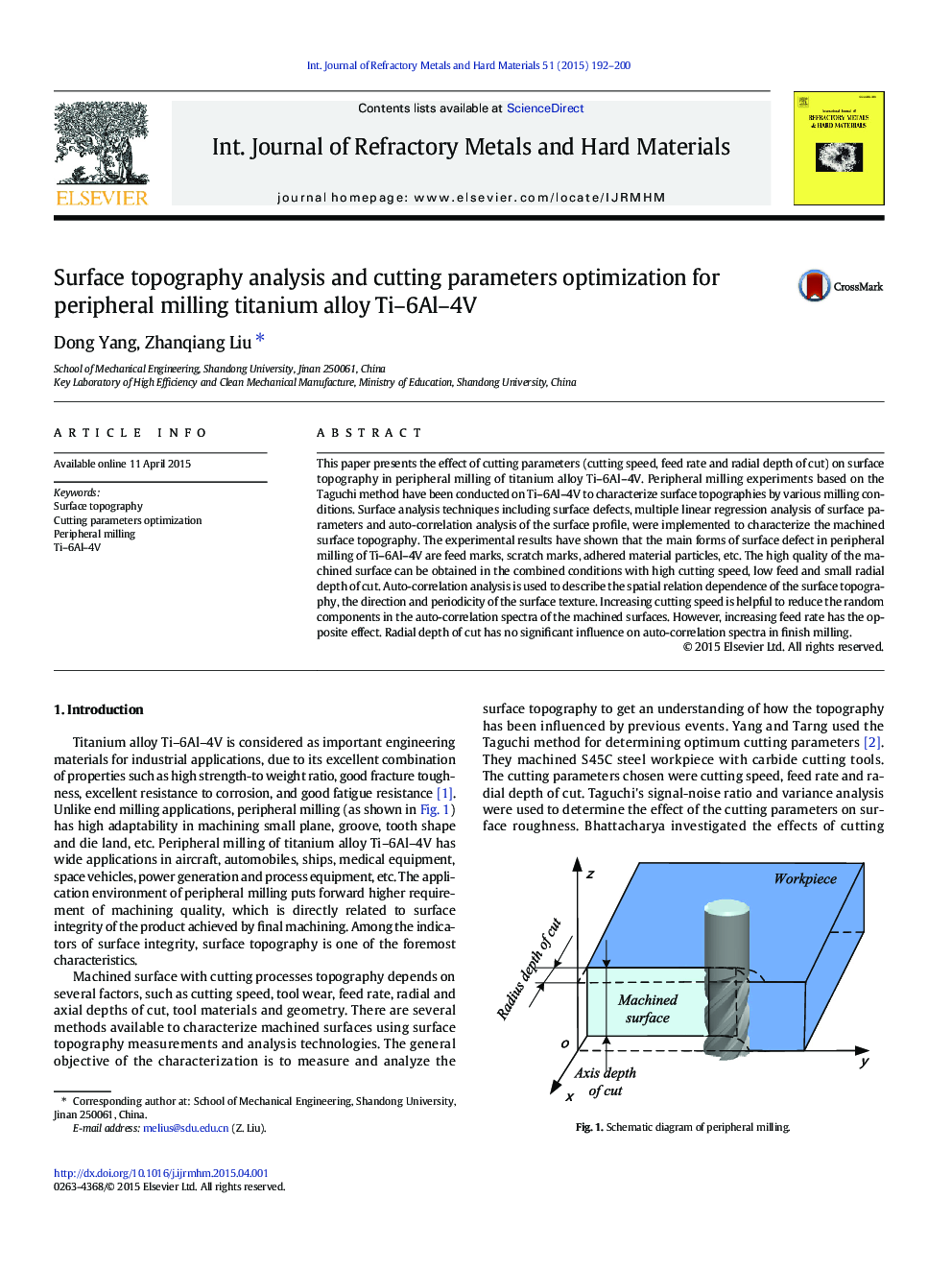| Article ID | Journal | Published Year | Pages | File Type |
|---|---|---|---|---|
| 1602954 | International Journal of Refractory Metals and Hard Materials | 2015 | 9 Pages |
•The main forms of surface defect are feed marks, scratch marks, adhered material particles, etc.•Effects of cutting parameters on the peripheral milling are studied.•The sensitivity sequences are not the same to different surface parameters.•Auto-correlation analysis describes the spatial relation dependence of the surface topography.
This paper presents the effect of cutting parameters (cutting speed, feed rate and radial depth of cut) on surface topography in peripheral milling of titanium alloy Ti–6Al–4V. Peripheral milling experiments based on the Taguchi method have been conducted on Ti–6Al–4V to characterize surface topographies by various milling conditions. Surface analysis techniques including surface defects, multiple linear regression analysis of surface parameters and auto-correlation analysis of the surface profile, were implemented to characterize the machined surface topography. The experimental results have shown that the main forms of surface defect in peripheral milling of Ti–6Al–4V are feed marks, scratch marks, adhered material particles, etc. The high quality of the machined surface can be obtained in the combined conditions with high cutting speed, low feed and small radial depth of cut. Auto-correlation analysis is used to describe the spatial relation dependence of the surface topography, the direction and periodicity of the surface texture. Increasing cutting speed is helpful to reduce the random components in the auto-correlation spectra of the machined surfaces. However, increasing feed rate has the opposite effect. Radial depth of cut has no significant influence on auto-correlation spectra in finish milling.
